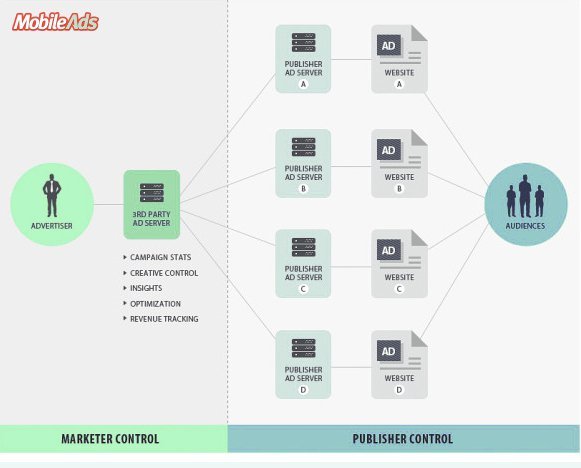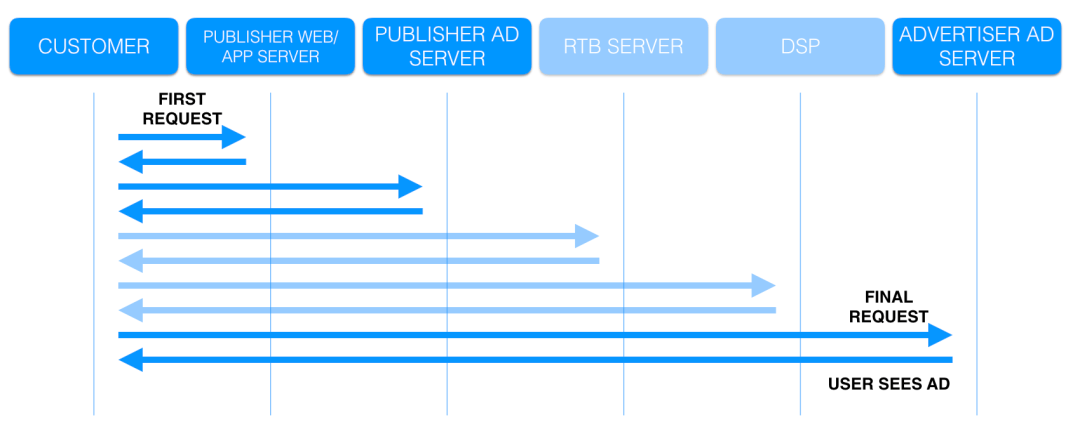Mobile Ad Serving: The Magic That Gets Your Creatives Onto Mobile Screens
One of the most underappreciated areas of mobile ads is the ad server. Ad servers are a fundamental part in determining if your creative is shown and given a chance to engage the customer or not.
But what makes for a good or bad ad server? Let’s dive in.
WTF is a mobile ad server anyways?
First, WTF is an ad server? An ad server means the technology and service that distributes advertisements to placements in websites or apps.
There are two main types of Ad servers. First is the Advertiser Ad Server (demand / buy side) and second is the Publisher Ad Server (supply / sell side). Ad servers allow advertisers to serve ads, publishers publish ads, track and count the creatives, monitor the performance of these ads.

A diagram showing the journey a rich media mobile ad takes from ad server to audience
Source: MobileAds Blog
Let’s concentrate on the Advertiser side of mobile ad serving a little bit…
Using the example in the above diagram, you can see the Advertiser is publishing one creative on four different Publisher ad servers. This is achieved by using a single “tag” (a short piece of code) that is provided by the Advertiser. These tags should then be sent to the publisher ad servers either directly or via a Demand Side Platform partner.
How do the tags work in real life? What are the steps taken to reach to the customer’s screen?
Currently, we are seeing, in the mobile ad space, everyone wants to attach their tag and gain more and more information about their audience. The issue here is that these bloated tags lead to a drop in performance for the end user.
To help you understand how data flows from endpoint to endpoint, here’s a very simple diagram showing you all of the different servers involved in the ad serving process.

Mobile ad server requests and responses
Note: RTB Server and DSP only come with programmatic ads, often times there’s more than one DSP tag in between programmatic ads.
With mobile devices, the connection speeds aren’t always great. So, really, we should be trying to make the graph above smaller, rather than bigger. If the browser or app fetches the ad slowly, the user is likely to abandon the page before the ad has finished loading.
This is one of the main reasons why serving rich media ads costs more.
I get it. Ad serving isn’t sexy. So it perhaps doesn’t get the attention it deserves. It goes overlooked, in favour of more appealing buzz words, like machine learning and hyper-granular targeting.
But it is fundamental to the entire online ad industry, whether on mobile or desktop. Which is why I believe, as an industry we need to come together and figure out ways that deliver better experiences for our users. Ad blocking is on the rise. People are pissed. So we should be trying to deliver better, faster products not bloatware mobile ads.
At the end of the day it is my belief that those products and solutions that are able to address this problem will be the ones left standing. Right now, we’re working on something that has the potential to revolutionise the way mobile ads are delivered, something I am very excited about and look forward to sharing with you very soon.